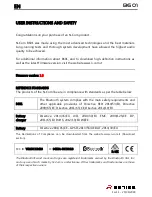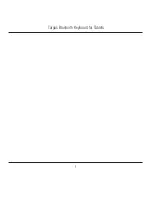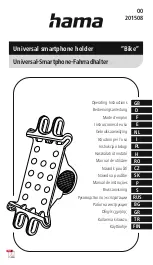
13
Do
NOT
connect to door motor wiring har
-
ness.
Match wire lead colors to awning motor
wiring colors:
BLACK
wire to
BLACK
(or
BLUE
) aw
-
ning motor wire, and
RED
wire to
RED
(or
BROWN
) awning motor wire.
9.
Repeat steps (4) through (5).
10.
If awning still does
NOT
respond to external
power source (after confirming connections and
charge on external power source), the motor
may be defective. Proceed to subsection, “B.
Remove Awning From RV” on page (13).
B. Remove Awning From RV
1.
With LH cover removed from awning, verify door
motor wiring harness is unplugged from awning
motor wiring (connector). See (FIG. 9).
2. Remove the (2) #10-16 X 5/8” screws securing
awning back rail to RV. See (FIG. 10).
3.
Remove the #6 X 1/2” TEK screws securing aw
-
ning bracket to awning rail. See (FIG. 11).
4.
LIFTING HAZARD. Use proper
lifting technique and control when lifting product.
Failure to obey this caution could result in injury.
With brief help from additional personnel, care
-
fully move (slide) the awning from awning rail.
5.
IMPACT OR PINCH HAZARD.
Hold lead rail firmly while closing awning. Lead
rail and lateral arm assemblies are under ten
-
sion from gas strut, and could extend quickly
and unexpectedly if
NOT
controlled. Failure to
obey this warning could result in death or seri
-
ous injury.
While maintaining firm control, push lead rail
back until it closes against awning casing. Then
securely tie it closed (with fabric strapping or
light rope).
Alternatively, several wraps of strong
duct tape may be used to secure awning
closed.
CLOSE OR REMOVE AWNING (POWER FAILURE)
GENERAL CARE AND USE
A. Precautions
Failure to obey the following notices
could damage product or property.
● Do NOT use insecticides or other sprays near
awning fabric. These could cause stains, and
could adversely affect fabric’s ability to repel wa
-
ter.
● Do NOT expose awning to adverse environmen
-
tal conditions, corrosive agents, or other harmful
conditions.
● Do NOT allow corner of entry door to contact
awning fabric. Otherwise, premature wear or
tearing of awning fabric could occur.
● NEVER close awning (for storage) when wet.
The combination of moisture and dirt could re
-
sult in mildew, discoloration, and stains.
If it is necessary to roll up awning (tempo
-
rarily) while it is wet, make sure you roll it
out and let it dry (as soon as conditions
allow) before rolling it up again.
● Do NOT allow dirt, leaves, or other debris to ac
-
cumulate on awning, which could cause abra
-
sion and stains. Mildew could grow on dirt and
organic debris causing permanent discoloration,
stains, and odors to awning fabric.
B. Hardware Maintenance
1.
Do
NOT
use strong chemicals or
abrasives to clean parts, as their protective sur
-
faces will be damaged.
Clean awning hardware (as needed) with a mild
surface cleaner (such as dish soap).
2.
Do
NOT
use silicone sprays near
labels. Otherwise, the label’s adhesive bond to
product surfaces could weaken.
Apply silicone spray lubricant as needed to keep
the fabric roller tube assembly’s moving parts
operating smoothly.
3.
Lubricate all sliding surfaces of arm assemblies
with silicone spray as needed.
C. Fabric Maintenance
Vinyl fabric offers the advantage of durability and
water resistance.
Wrinkling is a normal characteristic of vinyl.
Wrinkling may be more noticeable when re
-
tracted, and after prolonged periods of stow
-
age (rolled up). Leave awning open during
warm weather to minimize the wrinkling over
a period of time.
1.
To clean:
a.
Mix 1/4 cup dish soap and 1/4 cup bleach to
5 gallons of fresh water to use as cleaning
solution.

































